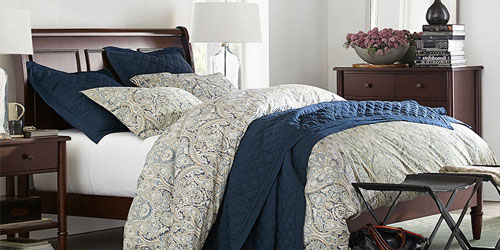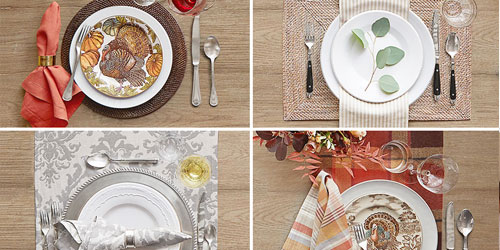No Dining Room: How to Work with a Combination Space

Creative decorating strategies can turn a smaller living-dining room or a kitchen-dining room combination into bright spaces that feel larger. Check out these tips from Pottery Barn to learn a few of our favorite living room/dining room layout ideas.
Use Mirrors Creatively
The classic best friend of a small space is a mirror. Depending on your space, you’ll have many options. Try using a large, floor-length mirror behind a piece of furniture, such as a chair that’s angled in the corner of the room. Or, hang a mirror on the wall horizontally above a piece of furniture. Using a mirror that’s the same length as the piece balances the space while doubling light in the room. Create another window by placing a mirror on the wall across from a real window. This reflects light and opens up the room. Similarly, you can place a mirror behind a light source. This maximizes the effect of natural light.
Get Rectangular with Rugs
It often feels more intuitive to use smaller rugs in a small or combined space. You can also creatively use a large rug. The key here is using a rug that extends beyond the furniture in each of your functional spaces. In a living space, use a rug that extends beyond the sofa and the coffee table to make your space feel bigger. Rugs also work well to delineate the different zones in your combination living/dining space. Use two large rugs, one in each area, to set the spaces apart. Leave at least a foot of space between the rugs if possible.
Smart Solutions and Stacks
It’s easy to overlook spaces that you have available up high. Especially in a smaller space, this can be a lifesaver for storage. Plus, it looks unique and stylish. With a taller bookcase, you can use the top shelves for books you don’t grab every day. This is a great way to keep your larger collection on hand, even when living in a smaller space.
Smart furniture is also a great idea for further storage. A hard-topped ottoman that extends up to desk level and holds magazines and books is great for concealing loose extras. Use a large trunk as your coffee table. Store off-season accessories or clothing inside until you need it. A collection of vintage suitcases piled on top of each other in a corner can act both as a stylish decor piece and storage in your space.
Display Pantry Supplies
In a smaller combined space that doesn’t have a separate pantry or lots of cupboard space, use wall shelving or even more utilitarian shelving units (a sturdy bookcase or shelving system, for example) to store dishes or pantry items. There are a few tricks to getting this right. You can also ensure it looks clean and doesn’t need much maintenance or rearranging.
Start by grouping like things together on the shelves. While they don’t have to be identical, putting similarly colored or shaped items grouped together gives a tidy and organized look. If you plan to store dry bulk goods on display, use jars in a similar size and shape. Another trick is to limit items that you’ll be putting on these open shelves. Stick with things that are visually attractive to you. Choose pieces that coordinate with the room and that you enjoy seeing out in the open.
Hang Drapes High
Curtains can enhance and complete a room, no matter its size. With a smaller room, hang your drapes as high and as close to the ceiling as you can. The higher the rod, the taller your window will appear. While longer curtains with puddling around the floor can give a romantic look, it’s not the best approach for a small living room or a living-dining room combo. Have the curtains stop just under an inch above the floor to open up the space more.


